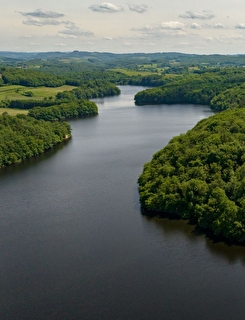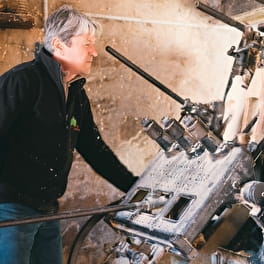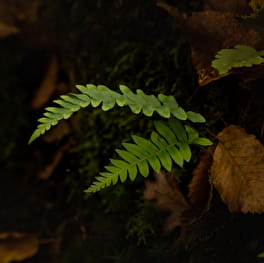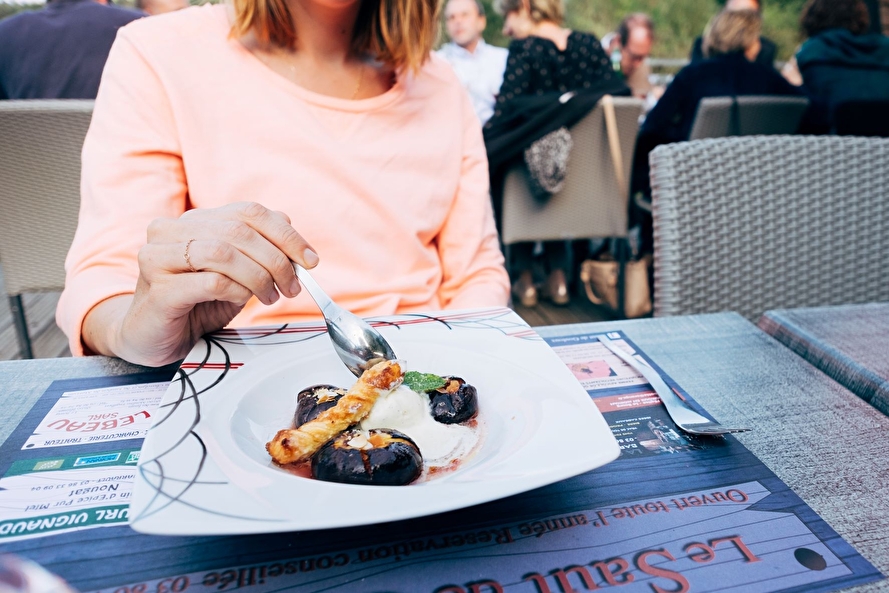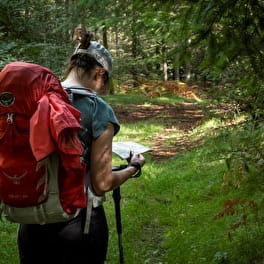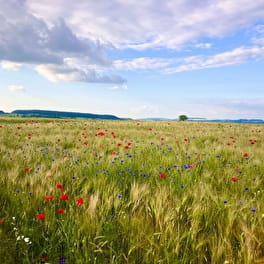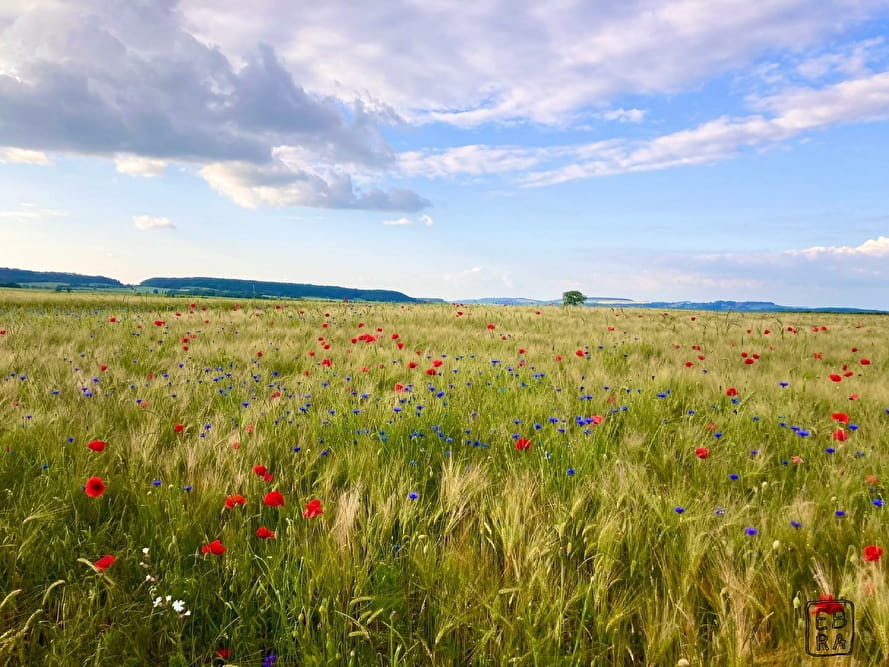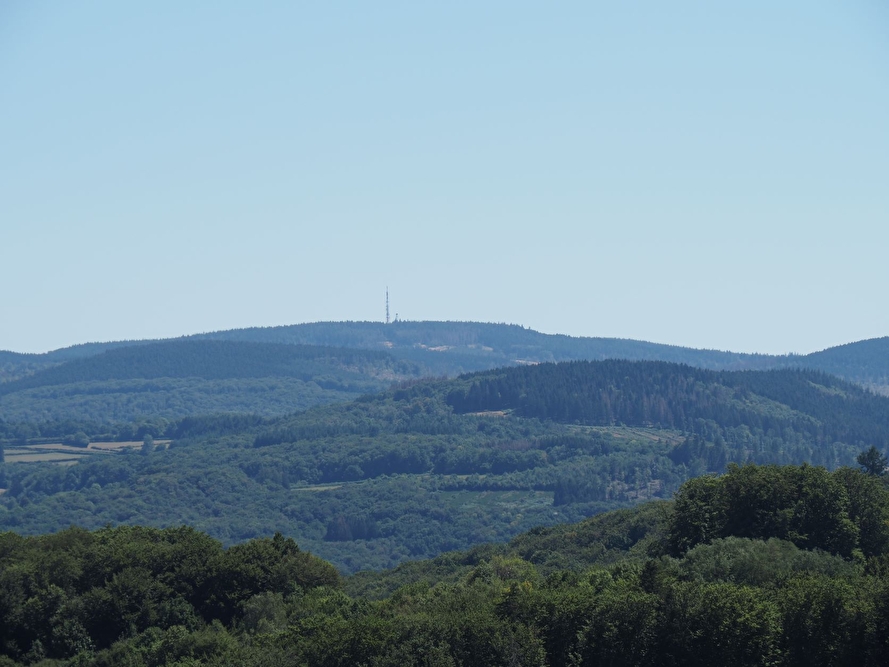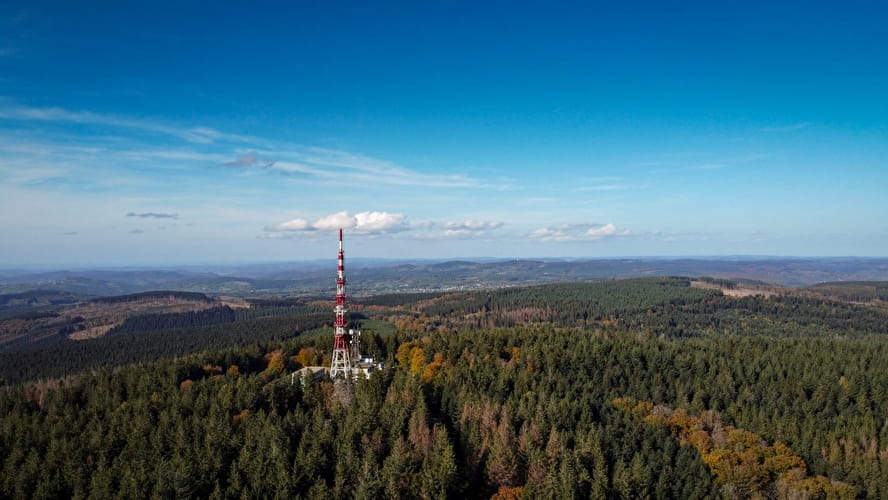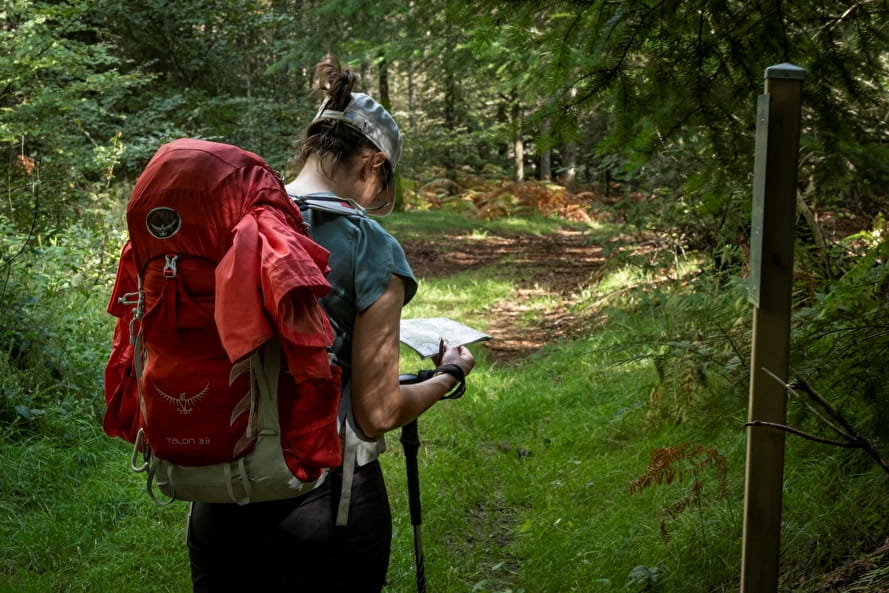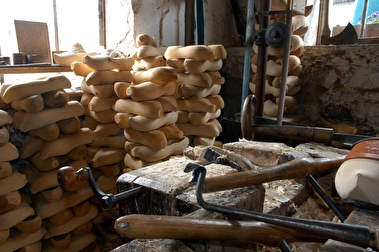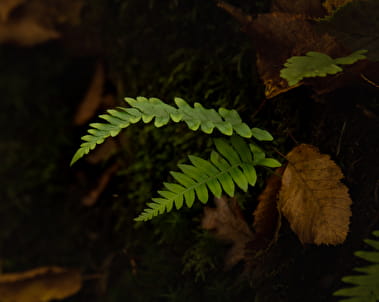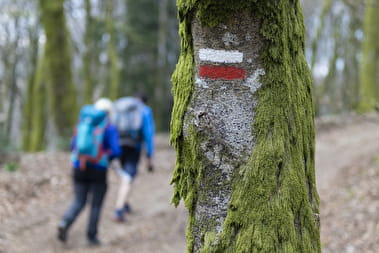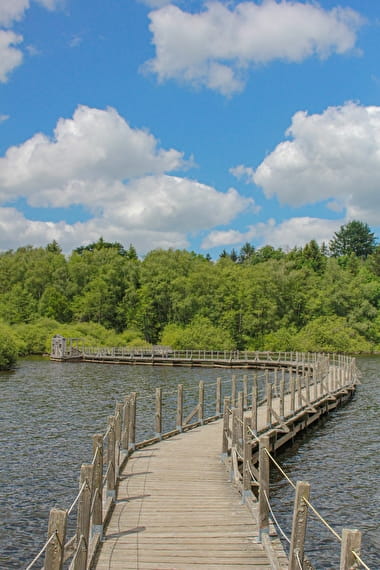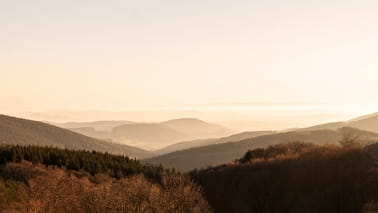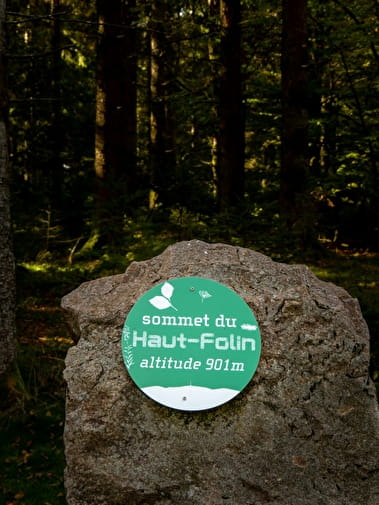
GR13
The GR® 13 is the long-distance footpath linking Fontainebleau to Bourbon-Lancy over a distance of 423 km. We suggest you do part of this walk, from Vézelay in the north of the Morvan Regional Nature Park to Glux-en-Glenne, the highest village in Burgundy.










































































































































































































































































































































































































































































































































































































































































































































































































































































































































































































































































































































































































































































































































































































































































































































































































































































































































































































































































































































































































































































































































































































































































































































































































































































































































































































































































































































































































































































































































































































































































































































































































































































































































































































































































































































































































































































































































































































































































































































































































































































































































































































































































































































































































































































































































































































































































































































































































































































































































































































































































































































































































































































































































































































































































































































































































































































































































































































































































































































































































































































































































































































































































































































































































































































































































































































































































































































































































































































































































































































































































Vézelay → Saint-André-en-Morvan

On the edge of Morvan
Your expedition begins with a warm-up stage before tackling the Morvan mountains. From the village of Vézelay and its eternal hill, in the north of the Morvan Regional Nature Park, you take the GR® 13 path towards Saint-André-en-Morvan. This village in the heart of Burgundy has radiated a religious aura since the Romanesque basilica of Sainte-Madeleine was built in the 12th century. So it's hardly surprising that it's been listed as a UNESCO World Heritage Site!

Notre Dame de Saint-Père church
Built between the 13th and 15th centuries and dedicated to the Virgin Mary, it only became a parish church in the 16th century, taking over from the former church of Saint Pierre (the ruins of which can still be seen on the southern outskirts of the village), which gave its name to the village.

La cure
This first section will be on limestone before moving on to granite at Pierre-Perthuis, where you will cross the Cure on its magnificent bridge. Dating from the 18th century, it has retained its original appearance and charm, with a 20m arch, cobblestones, wheel guards and dressed stone parapets. A little anecdote: It was used as a film location for a scene in the film "La grande vadrouille". Like other places in the Vézelien.

Saint-André-en-Morvan → Chalet du Montal

Chastellux-sur-Cure Castle
On this second day, you'll start the walk by passing not far from the Château de Chastellux, which has belonged to the same family for almost 1,000 years! The oldest remains date back to Roman times, and the oldest buildings in this stronghold date back to the 11th century. Nestling on a triangular rocky peak that gives it its distinctive shape, the fortress has been altered, enlarged and embellished through the ages, right up to the present day. The history of the de Chastellux family is closely linked to that of Burgundy and France, as well as to that of the American War of Independence. The château is surrounded by a remarkable park designed by Le Nôtre, offering a variety of views of the estate.

Le lac du Crescent
You will have the opportunity to cross the first artificial lake, the Crescent (which means crescent in Morvandiau), built between 1930 and 1933 and financed as war damages owed by Germany to France after the First World War.

The Resistance in Morvan
DRAMATIC PARACHUTE DROPS - MAZIGNIEN AND MARIGNY-L'EGLISE CEMETERY
On the night of 18 July 1944, two parachute drops were expected, one by the British S.A.S. and the other by resistance fighters from the Camille maquis. The two planes left England and arrived over the "Peinture" airfield at the same time. Parachuting at the same altitude, they collided. The crews were killed, 15 of them. This tragedy at Mazignien can be explained by the high frequency of parachute drops in the Morvan at the time, the lack of coordination between the allied services and a terrible fate. Most of the crew members of the British plane are buried in the cemetery at Marigny l'Eglise. The bodies of the Americans are buried in the United States.

Dun-Les-Places
THE DUN-LES-PLACES MASSACRE - DUN-LES-PLACES CHURCH AND CEMETERY
From 26 to 28 June 1944, the people of Dun-les-Places endured three days of horror. Around 3,000 German soldiers invaded the village and massacred part of the population, before looting and setting fire to many houses. Dun-les-Places was the worst hit martyred village in Burgundy during the Second World War. Under the porch and in front of the church, the monument and memorial in the communal cemetery bear witness to this tragedy. In 2016, the "Dun-les-Places Memorial" interpretation centre will open its doors to the public.

Le chalet du Montal
- Chalet du Montal
-
Pont du Montal
58230 DUN-LES-PLACES - 03 86 84 62 77
- chaletdumontal@xs4all.nl
- chalet-du-montal-dun-les-places.hotelmix.fr/

Chalet du Montal → Les Settons
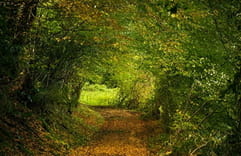
Breuil-Chenue forest
You begin the third stage by immersing yourself in the Breuil-Chenue forest, which is very welcome in hot weather or for shelter.

deer park
cOn the way, you'll pass by the deer park. Curious, they'll come to meet you and glean you a few treats.

Dolmen Chevresse
In the shade of oak, elm, beech and chestnut trees, you make your way to the Chevresse dolmen. Whether a stone of legend or a simple granite chaos, this curiosity of the Morvan leaves no one indifferent.

Champgazon
The peat bogs of the Morvan are a group of very discreet sites in a rural area of small wooded mountains. Twelve peat bogs were classified as a Regional Nature Reserve on 13 November 2015, representing 266 hectares divided into 14 sectors.
Due to its physical and climatic characteristics, the Morvan has been a favourable terrain for the development of peat bogs, some of which have existed for 15,000 years.

Gouloux
The Saut de Gouloux is a remarkable natural site and a major tourist attraction in the Morvan. The Caillot stream falls into an ancient fault that has created an overhang and a 10 m high waterfall. Take your time to enjoy this place and refresh yourself. It's a great place to have a picnic and even take a dip.
In the early afternoon, explore the village and its church with its leaning steeple. Before you set off again, take a look at the Marchand clog factory, where time-honoured craftsmanship is carefully preserved.

La cabanétape
- Location Cabane étape Verte au Lac des Settons Morvan - ACTIVITAL
-
Lieu-dit Les Branlasses
58230 MONTSAUCHE-LES-SETTONS - 03 86 84 51 98
- settons@activital.net
- activital.net/hebergements-au-lac-des-settons/

Les Settons ➔ Anost

La passerelle
For the fourth day, you'll start with the not-to-be-missed spot around the lake. Situated to the south, between the Chevigny peninsula and the tourist route where it joins the Cure.

Notre Dame de l’Aillant
The statue of Notre Dame de l'Aillant was built in 1878 and its plaque was affixed to the plinth on 15 August 1946 in recognition of Notre Dame, who protected Anost on 14, 15 and 16 July 1944 from the German troops preparing to set fire to the village.
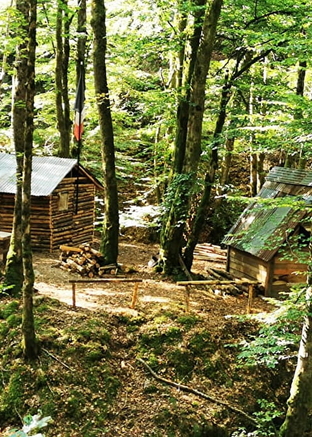
Known as Socrate
Georges Leyton, known as "Socrate", enlisted at 19 and was a career second lieutenant in 1940. An early Resistance fighter, in February 1944 he set up an armed group in a disused farmhouse at Le Four-Vieux, near the Maubous woods.

Maison du Patrimoine Oral
The Maison du Patrimoine Oral de Bourgogne, a centre for cultural action and ethnological research in rural areas, is committed to transmitting, safeguarding and promoting the words and cultures of the Morvan and Burgundy by listening carefully to the land.

Gîte étape d'Anost
Gîte in the Morvan on the GR13 and the Tour du Morvan. Welcomes pilgrims from Santiago de Compostela and St Francis of Assisi. In a former school. Open all year round by reservation.
- French, English
- 1 room(s), 26 person(s)
- Bank and postal cheques, Holiday vouchers, Cash, Money orders, Bank transfers
Rates :
Overnight stay (/pers.) (Informative rate to be checked with the establishment): 13€
Seminars / Room hire (Informative rates to be checked with the establishment) : 130€
+33 7 61 64 20 20 / +33 3 85 82 75 75

Anost ➔ Glux-en-Glenne
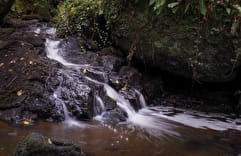
Les gorges de la Canche
It's off to the penultimate stage, and it's not all plain sailing. It's 29km long and takes in the highest point in the Morvan, Haut-Folin at 901m. But first you'll have to thread your way through the steep, picturesque gorges of La Canche. They are classified as a "Réserve Biologique Domaniale" and are part of the Natura 2000 sites. Its waters are home to fario trout, among other species.

Le Haut-Folin
This summit dominates Burgundy and the Monts du Morvan by its size and its omnipresent nature. At an altitude of 901m, you can immerse yourself in the intimacy of the flora and fauna that inhabit this exceptional mountain.
Discover the Haut-Folin
The sources of the Yonne
Going back to the source, a walk through time: for over 2000 years, man has successively exploited and then abandoned the site of Mont Préneley and the sources of the Yonne.
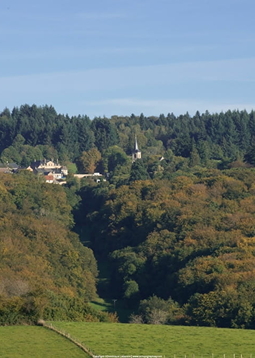
Glux-en-Glenne
Glux is the highest commune in the Morvan and Burgundy, between Mont Beuvray (820 m), Prénelay (855 m) and the Haut Folin massif (902 m), in the neighbouring commune of Saint-Prix.

Plumes de Mouton et Cie
- Plumes de Mouton et Cie
-
8, chemin des Guichets
Les courreaux
58370 GLUX-EN-GLENNE - contact@plumesdemouton.fr
- www.plumesdemouton.fr

Glux-en-Glenne → Millay

Mont Beuvray
This mountain is not the highest in the Morvan, but its panoramic views are breathtaking.

Bibracte
The remains of a Gallic city. In 1851, French wine merchant Jacques-Gabriel Bulliot, a history enthusiast and member of the Société éduenne des lettres, sciences et arts, discovered the remains of a Roman camp on the summit of Mont Beuvray near a small medieval chapel.

Les queules
Nature on the mountain is remarkable. A magnificent beech forest has grown here, populated by queules, young trees that were once woven by farmers to demarcate agricultural plots.

In the footsteps of Maquis Louis
The "Louis maquis" was located in the neighbouring commune of Larochemillay, at the Fraichots camp. It was made up of many young locals, including a number of Gluxois, including carpenter Émile Blanchot, who was shot by the German army at Mellecey on 26 August 1944 following a tip-off.

Chambre d'hôte du petit Montigny
Alexandre welcomes you to the first floor of his home.
This 3-bedroom has its own private bathroom and independent access to the outside via the staircase. Breakfast consists of organic bread made by the local artisan baker, accompanied by homemade jams and apple juice.
For hikers, dinner can be served to order for 12 euros/person.
Rates:
- 1 night with breakfast for 1 : 23€
- 1 night with breakfast for 2 : 45€
- 1 night with breakfast for 3 : 67€



